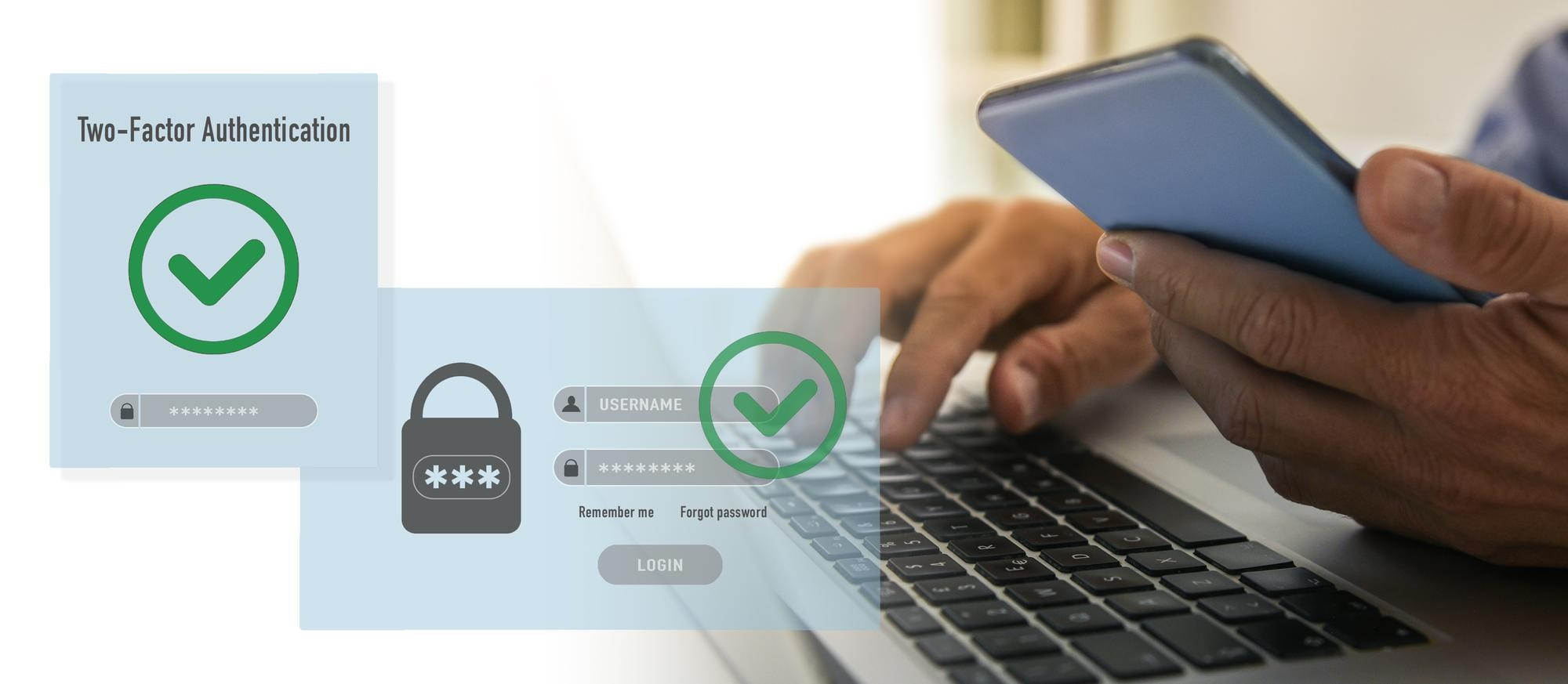Is Texting HIPAA Compliant? Everything You Need to Know
In today's hyper-connected world, text messaging has become a dominant form of communication – quick, convenient, and almost universally adopted....
7 min read
Gregory Vic Dela Cruz : 8/13/25 3:00 PM

In medical practice, HIPAA compliance is non-negotiable. With the rapid adoption of conversational AI, new dimensions are added to the challenge. These AI-driven tools, which include chatbots and voice assistants, can solve many problems that small practices face. Positive outcomes range from improved patient follow-ups to streamlined administrative workflows.
However, these automation tools also introduce risks, especially without stringent data protection safeguards in place. Thus, ensuring that conversational AI tools meet HIPAA requirements is crucial to maintaining trust, protecting patient privacy, and avoiding costly violations.
In this guide, we’ll unpack everything you need to know about HIPAA compliance for conversational AI in healthcare. At minimum, our objective in this blog is to:
From encryption standards to vendor agreements, you’ll learn how to implement AI technologies without sacrificing security or compliance. You’ll also find actionable tips for training staff and evaluating AI vendors to ensure they meet your compliance standards.
Whether you’re exploring conversational AI for the first time or seeking to improve your existing workflows, this article will give you the clarity and confidence to move forward. Here, you can learn how to harness the benefits of AI while fully adhering to HIPAA requirements. Let’s jump in starting with the questions often asked by providers.
HIPAA compliance for conversational AI refers to implementing administrative, physical, and technical safeguards to ensure that Protected Health Information (PHI) is handled securely. Conversational AI systems often capture, store, or transmit PHI, such as appointment details, lab results, or billing information. Compliance means ensuring these systems meet HIPAA’s Privacy Rule (protecting the confidentiality of PHI) and Security Rule (ensuring the integrity and availability of PHI).
PHI includes any information that can identify a patient, such as names, addresses, medical record numbers, payment details, or medical diagnoses. A HIPAA-compliant AI tool could potentially handle these during appointment scheduling, prescription refills, symptom assessments, or billing queries. It’s critical to identify all PHI touchpoints in the AI’s workflow so you can secure them appropriately.
No. Most commercial AI tools—especially general-purpose chatbots—are not HIPAA-compliant out of the box. Compliance requires specific safeguards like end-to-end encryption, audit logging, access controls, and the signing of a Business Associate Agreement (BAA) with the vendor. Without these, using the AI tool for PHI-related tasks could violate HIPAA.
Under HIPAA’s Security Rule, technical safeguards for conversational AI include:
If a conversational AI vendor processes PHI on your behalf, they are considered a Business Associate under HIPAA. This means they must sign a BAA, committing to safeguard PHI according to HIPAA requirements. Without a BAA, sharing PHI with that vendor is a compliance violation, regardless of any technical safeguards in place.
Staff training should cover recognizing PHI, avoiding unnecessary data entry, using secure authentication, and knowing when to escalate to a human for sensitive or complex queries. Role-specific training is also essential—front desk staff, clinicians, and billing teams each interact with conversational AI differently and must understand the compliance implications for their workflows.
Common pitfalls include:
Regular audits and vendor reviews can prevent these issues.
Yes—when configured correctly, conversational AI can enhance compliance. Examples include automated reminders sent through encrypted channels, audit-ready documentation of patient communications, and immediate flagging of incomplete or inconsistent patient information. AI can reduce human error by enforcing standard workflows and ensuring PHI is collected and stored securely.
Ask vendors for proof of HIPAA compliance, request security documentation, and ensure they will sign a BAA. Test their AI’s handling of PHI in a controlled environment, confirm encryption protocols, and review their incident response plan. Also, inquire about their subcontractors—HIPAA requires the same compliance standards from all parties handling PHI.
Accept that HIPAA compliance for conversational AI in healthcare isn’t optional—it’s foundational. By understanding your responsibilities, implementing the right safeguards, and working only with HIPAA-compliant vendors, you can leverage AI to improve patient engagement while maintaining the highest privacy and security standards.
Conversational AI in healthcare often operates across multiple communication channels—web chat, SMS, email, and voice. Each channel introduces its own vulnerabilities. Without proper encryption, PHI could be intercepted during transmission, resulting in a HIPAA breach. Cyberattacks targeting healthcare data have risen sharply in recent years, making robust technical safeguards non-negotiable.
Many healthcare providers assume that if an AI tool is marketed to healthcare, it must be HIPAA-compliant. Unfortunately, this is not always the case. Vendors may not sign a Business Associate Agreement (BAA) or may use third-party services that don’t meet HIPAA requirements. This creates a compliance gap that puts your practice at legal and reputational risk.
Even the most secure AI platform can become a compliance liability if staff misuse it. This includes entering unnecessary PHI into an unsecured chatbot, sharing patient data through personal devices, or bypassing authentication protocols for convenience. Without training and role-based permissions, human error can undermine the technology’s safeguards.
HIPAA requires the ability to track access to PHI and review audit logs. Some AI systems do not provide detailed activity logs, making it impossible to identify who accessed patient data and when. This lack of transparency can result in non-compliance during an audit or investigation.
Integrating conversational AI with outdated EMR or practice management systems can be a challenge. Legacy systems may lack secure APIs, forcing workarounds that compromise security. Without proper integration planning, your AI tool could store PHI outside your primary secure environment, increasing exposure risk.
Recognizing these pain points is the first step in building stronger, HIPAA-compliant workflows. The next step is selecting the right tools designed to meet compliance standards from the ground up.

These specialized chatbots use encrypted communication and enforce strict authentication. They are ideal for appointment scheduling, medication refill requests, and secure patient messaging without exposing PHI to unauthorized parties.
Voice AI platforms can handle appointment reminders, triage calls, and FAQs securely. Look for solutions that support call encryption and maintain audio logs in HIPAA-compliant environments.
Some telehealth solutions now integrate conversational AI for intake and follow-up. They combine secure video conferencing with AI-powered symptom checkers, ensuring all patient data stays within HIPAA-compliant systems.
These tools help clinicians capture visit notes via secure voice commands or chat prompts. They reduce manual entry errors while storing documentation in HIPAA-compliant EMRs.
HIPAA-compliant AI survey tools gather patient feedback post-visit, encrypting all responses and linking them securely to patient records.
AI bots can check coverage in real time and securely transmit results to staff, avoiding delays while keeping PHI secure.
These tools track claim status, send reminders, and flag denials—all while encrypting PHI and limiting access to authorized billing staff only.
When combined, these tools create a multi-layered security framework that keeps your conversational AI workflows HIPAA-compliant without sacrificing efficiency or patient engagement.
Curogram stands out by providing HIPAA-compliant communication tools that integrate directly into your clinical workflows. One of its key strengths is secure, two-way texting with patients—fully encrypted and stored in compliance with HIPAA regulations. This means appointment reminders, test results, and follow-up instructions can be delivered quickly without compromising privacy.
Curogram’s group messaging feature allows providers, staff, and patients to communicate in a single encrypted thread. This eliminates the need for separate channels that could introduce security vulnerabilities. Every message is logged with time stamps and user IDs, creating a complete audit trail for compliance reviews.
All communications—whether chat, SMS, or email—are protected by end-to-end encryption. This ensures that PHI is only accessible to authorized participants, protecting against both internal and external threats.
By integrating Curogram into your HIPAA compliance AI strategy, you can create an environment where patient engagement and data security work hand-in-hand. This approach not only meets compliance requirements but also builds lasting trust with patients.
Before deploying conversational AI, perform a comprehensive risk assessment to identify potential vulnerabilities in data handling, storage, and transmission. Address each risk with specific safeguards, from encryption to access control policies.
Compliance isn’t a one-time event—it’s an ongoing process. Regularly train staff on identifying PHI, using AI tools correctly, and reporting suspected breaches. Use simulated phishing and data entry scenarios to test readiness.
Restrict access to PHI based on job roles. AI tools should only display or process the minimum necessary information for a given task. This minimizes risk if an account is compromised.
Vet all AI vendors for HIPAA compliance, ensuring they sign BAAs and follow strict data protection protocols. Review their compliance documentation annually and require updates after major system changes.
Establish a review process for chatbot transcripts, voice logs, and other AI outputs to ensure PHI is being handled appropriately. Use automated monitoring tools where possible to flag risky behavior.
These best practices allow you to adopt AI with confidence, ensuring it enhances care delivery without creating compliance risks.
Conversational AI offers immense potential for improving patient communication, streamlining workflows, and enhancing care delivery. But in healthcare, innovation must walk hand-in-hand with compliance. By understanding HIPAA’s requirements and selecting AI tools that meet those standards, you can enjoy the benefits of automation while safeguarding patient trust.
From secure chatbots to encrypted voice assistants, the right technology will not only protect PHI but also help your practice operate more efficiently. HIPAA compliance doesn’t have to be a barrier—it can be a competitive advantage when paired with the right AI strategy.
See how Curogram can help you implement HIPAA-compliant conversational AI tools that transform patient engagement without compromising security. Request your demo today.

In today's hyper-connected world, text messaging has become a dominant form of communication – quick, convenient, and almost universally adopted....
.png)
HIPAA compliance forms the bedrock of patient trust in the healthcare system, establishing essential rules for safeguarding sensitive health...

💡EMR integration is a compliance lifesaver because it eliminates double entry, centralizes communication, and ensures every patient interaction is...